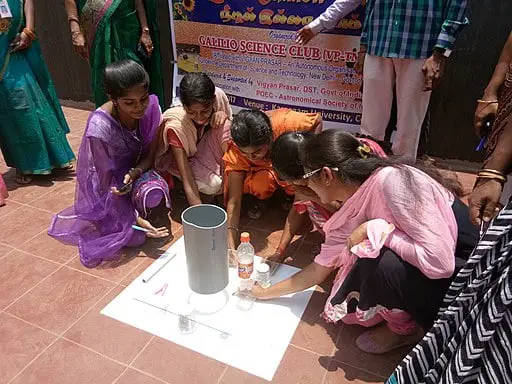A zero shadow day is a day when the Sun does not cast a shadow of an object at solar noon.
When the sun will be exactly at the zenith position. Zero shadow day happens twice a year for locations in the tropics (between the Tropic of Cancer at latitude 23.4° N and the Tropic of Capricorn at 23.4° S). The dates will vary for different locations on Earth. This phenomenon occurs when the Sun’s declination becomes equal to the latitude of the location.
On a zero shadow day, when the sun crosses the local meridian, the sun’s rays will fall exactly vertical relative to an object on the ground and one cannot observe any shadow of that object.
For example, in Delhi, India, the zero shadow days are on May 9 and August 18. In New York City, the zero shadow days are on May 13 and August 20.
Zero shadow day is a fascinating celestial phenomenon that can be enjoyed by people all over the world. It is a reminder of the Earth’s tilted axis and its journey around the Sun.
Other things to know about zero shadow day:
- The Sun’s declination is the angle between the Sun’s rays and the Earth’s equator. It changes throughout the year, reaching its maximum northerly point on the summer solstice and its maximum southerly point on the winter solstice.
- Occurs when the Sun’s declination is equal to the latitude of the location.
- The is not the same as the equinoxes. The equinoxes occur when the Sun’s declination is zero, and on these days, the day and night are of equal length.
- This day is a good opportunity to learn about the Earth’s rotation and its journey around the Sun. It is also a beautiful sight to see, as the Sun appears to be directly overhead.
Image credit
TNSC SHANMU VPM, CC BY-SA 4.0, via Wikimedia Commons
